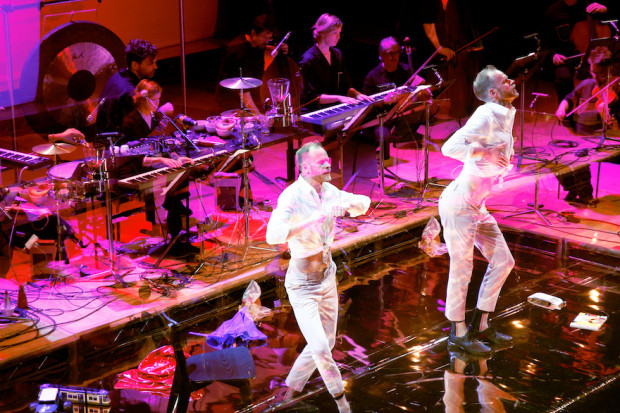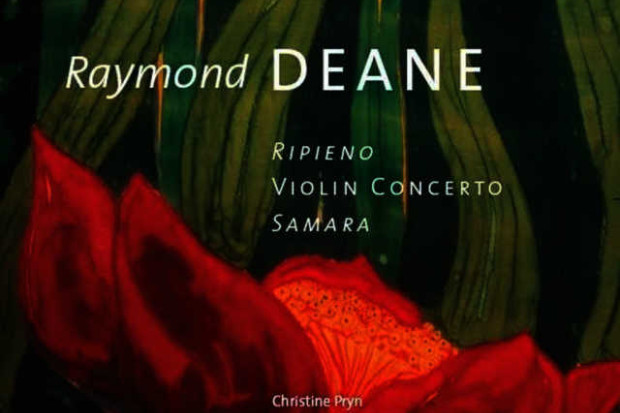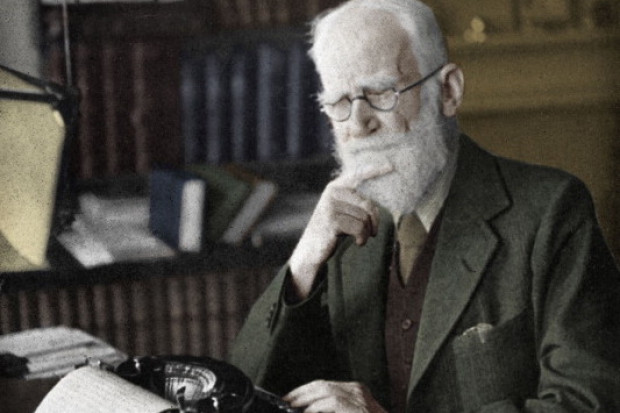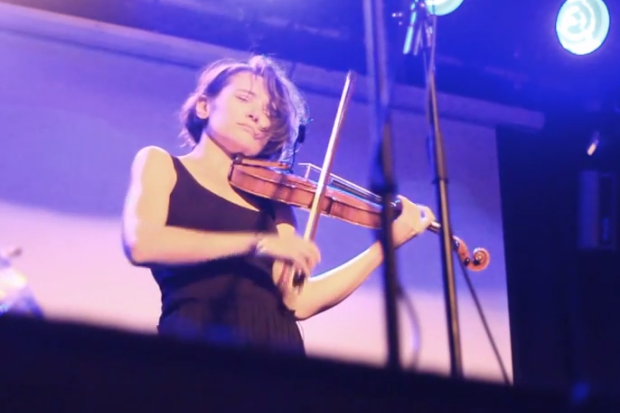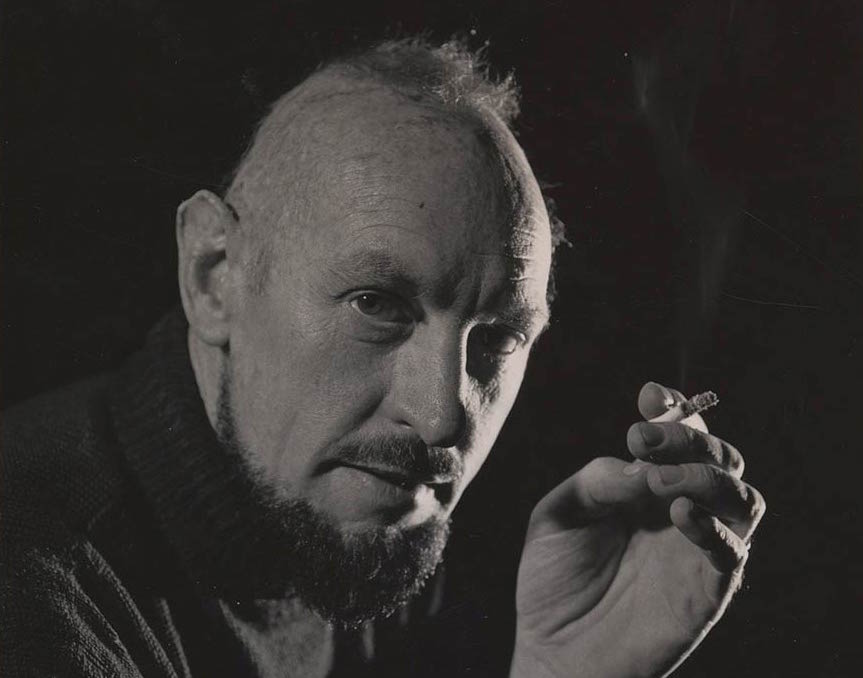
Brian Boydell
The Life and Music of Brian Boydell
The Life and Music of Brian Boydell
edited by Gareth Cox, Axel Klein & Michael Taylor Irish Academic Press
ISBN 0-7165-2762-6
160 pages, €45.00
Brian Boydell, who died in the year 2000, was one of the most important Irish composers of the twentieth century and so a publication demonstrating his life and work is most welcome. Published books on Irish composers are such a rare variety that I must confess that I opened the first few pages of this chronicle with great enthusiasm and expectation. I closed it with a mixture of enjoyment and disappointment.
There are many interesting aspects to this celebration of the life and music of Brian Boydell. Where facts and details about his compositions, writings and recordings are concerned, the book may be considered invaluable (this information, compiled by Axel Klein and Hazel Farrell, is printed in the four appendices). In the actual chapters dedicated to different aspects of Boydell’s work and life, I had more than a few misgivings.
Man and music
Chapter One by Axel Klein, entitled ‘Brian Boydell: of man and music’, offers us a biographical outline of Boydell’s life which is full of interesting facts and curiosities. By way of a series of twelve short sections Klein takes us more or less chronologically though Boydell’s early education in England, his student years at Cambridge and Rugby, his brief sojourn in Germany and his early years as a composer in Ireland. He then traces the trajectory of his compositional career and educational profession leading up to his emergence as a leading musicologist of the late twentieth century in Ireland.
Klein also highlights for us the contribution Boydell made to the development of musical infrastructure in Ireland from the nineteen-forties onwards. We read about his early involvement with the Association of Irish Composers and his influence on, and work with, the Music Association of Ireland, not to mention his life-long affiliation with the Dublin Orchestral Players, his early work as a vocal teacher and the over one thousand broadcasts he made for Raidió Telefís Éireann. Taken as a whole we can see how Boydell’s presence as an activist for music, old and new, was so vital in mid-century Ireland. His development of the Music Department in Trinity College, Dublin, his work with the Dowland Consort, and his unique contribution to Irish musicology indicates that his influence was felt well into the latter half of the century also.
But there are, moreover, many pleasant surprises, like the fact that Boydell wrote a surrealist puppet play for the Dublin Marionette Group that was produced in the Peacock Theatre in the mid-forties. Curiosities appear, like his interest in chemistry, which allowed him to set up a company (Norman, Boydell & Kerwood) to equip cars with an alternative driving system during the petrol shortage of the War years.
Having said this, one gets the feeling that the chapter fails to really penetrate very deeply into the character that is Boydell, to his ideas and prejudices. Many interesting aspects of his life and philosophies seem often to be merely mentioned and then left to the side, tantalisingly unexplored. For example, Boydell’s pacifism and religious views are mentioned, but considering his life-long commitment to pacifism and how it affected his creative work (a socio-political standpoint that was at least as important for Boydell as it was for Britten), it seems a shame that we are not offered anything more than a passing comment.
Likewise, there is insufficient light thrown on Boydell’s time in Germany. Reference is made to his encounter with a burnt-out Jewish village, but there is no further expansion on this – no first-hand quotes to enable us to get a better idea as to Boydell’s real experience and response to this environment in which he found himself, how it may have affected his pacifist stance, if at all. Considering that this point is made in the context of Boydell’s negative experience of Irish nationalism the point might have been be clarified. A strange and dubious comparison is made here between Irish nationalism and the extreme ideology of the German National Socialists. Did Boydell make specific connections between Nazism and Irish nationalism? Or is this, rather, a convenient ‘reading’ of an unclear situation?[1] Incidentally, Boydell has stated clearly that he was more or less too naive to really understand what was going on then politically – ‘I was too steeped in cultural interests, and too immature to be politically aware (except in disturbing retrospect) of what was going on at that time.’[2] And so it would appear that an opportunity here to illuminate Boydell’s German experience has been lost.
Elsewhere we are told that Boydell sang songs by Schoenberg, Berg and Bartok, but we never discover what significance this actually has. We are not told to what extent (if at all) these composers had a noteworthy influence on his compositional development, and we therefore unfortunately remain ignorant of the level of engagement Boydell had with the music of the leading composers of the period – an aspect which one would consider of the utmost relevance.
While some opportunities for discovering valuable insights into his musical thinking are left unexplored, Klein has a tendency to indulge in a number of accounts that could only be described as minor gossip. I’m talking here about the events concerning the resignation of the then music critic of the Irish Times Denis Donoghue, or the Tibor Paul ‘incident’ which resulted in the cancellation of an American tour for the RTÉ Symphony Orchestra. Apart from the fact that these ‘scandals’ are contemporaneous with Boydell’s professional career and that he was professionally connected to both ‘protagonists’ one is not quite sure why we are reading this. It seems to me that these anecdotes remain just that – anecdotes – and, being neither properly corroborated nor convincingly demonstrable of their importance in relation to Boydell’s work and life, would probably have been best left aside.
And yet, I do not wish to appear overly critical as Klein does give us a more or less integral overview of Boydell’s life and times. In fact, this outline is as much a profile of the musical life of Ireland as it is of Boydell, and to be fair, Klein does provide a caveat at the end of the chapter pleading that the ‘sketch’ cannot ‘replace a full and comprehensive biography’ which would obviously go into more detail. With this in mind one wonders would this book not have provided a great opportunity for the editors to include Boydell’s own unpublished autobiography, The Roaring Forties and Thereabout. There is no doubt, however, that in the twenty-three pages of Chapter One, Klein has provided us with a credible introduction to the composer. In the meantime, for a more intimate and penetrating portrait we must await a fuller biography.
The music language of Boydell
Chapter Two, written by Gareth Cox, entitled ‘The Music Language of Brian Boydell’, can be loosely divided into three sections – a general discussion which tries to locate Boydell’s harmonic and rhythmic language vis-a-vis his international contemporaries, an attempt to illuminate specific aspects of his harmonic practices, and a very brief discussion of Boydell’s use (or non-use) of Irish folk materials. Cox starts off by outlining some composers who have influenced Boydell. These ‘influential’ composers would seem to comprise an unusually disparate lot, including Berg, Vaughan Williams, Sibelius, Mahler, Prokofiev. Moeran and Bax. It is suggested that, apart from the Second Viennese School, most major composers from the first halt ot the twentieth century exerted an influence. Well, all one can say is that this is of little assistance to the reader. It is also suggested that Hindemith was an important influence (at least in relation to his theories) and that Bartok exercised a rhythmic stimulus on Boydell’s work. None of these propositions is re-enforced by any notational evidence or comparison, and it would seem to me that to merely offer a list of such disparate influences without further clarification is not very enlightening. The clearest part of this chapter is expressed when Cox simply offers that ’The hallmark of Boydell’s style… is manifestly revealed in the study of the juxtaposition of diatonicism (both implied and overt) and octatonicism, evident in most of his major works’.[3]
From here on in things go downhill as Cox embarks upon a series of attempts to highlight where Boydell has employed octatonic scales in combination with a more or less improvised diatonicism. Cox embroils us in such a barrage of academic verbosity as to render the majority of his exposé beyond reasonable comprehension. Add to this unnecessary prolixity a catalogue of grammatical, notational and editorial errors, further confused by insufficiently clear references and a constant search for the music examples which appear several pages further on than the text discussing them, and one gets a picture of the difficulties an average music aficionado would have in tackling this chapter (not to mention the average interested reader who also deserves respect here). After several hours of study, this writer was left confused and frustrated.
When one manages to decipher utterly bewildering passages like ‘The main difference is 8-28’s symmetrical axis at the tritone which renders tonic-dominant relationships impossible and its four trichords [0,1,3J with its eight occurrences of the interval class 3. Whereas 8-28 has an interval vector of 448444, 7-35 has a vector 254361 which is one of only four where each entry is unique’,[4] the next step for the hapless reader is to make sense of segments like this: ‘Boydell is fond of such standard contrapuntal techniques and he uses devices such as inversion, stretto, augmentation and soon to develop his subjects’(!)[5] We are then referred to music example 10 where a four-note figure (enigmatically) called ‘4-Z15’ is incorrectly quoted. Instead of the notes C sharp, G sharp, B and G natural (as they appear in the score – String Quartet No. 3, viola part bar 5) we are given C sharp, G sharp, B and F.
Prospective readers should be warned that music examples 7 and 8 both contain the same music, but according to Cox this is (in the first case) bars 95-100 of the second movement of the String Quartet No. 1 and (in the second case) five bars from the String Quartet No. 3. Either Boydell has pulled off a very interesting coup in self-plagiarism or something serious has gone wrong with this analysis (for the record, both quotes are of the latter). Meanwhile, on page 30, Cox refers us to music example 22 to observe an important passage that closes String Quartet No. 3. It is, in fact, to be found in music example 23.
Many more sections are merely vague at best. Take, for example, a reference to String Quartet No. 2, which Cox tells us ‘begins with the tetrachord [0,1,3,4], 4-3 and a sub-set of 8-28 shows that he [Boydell] also contrasts it with 3-9 (see music example 18)’.[6] Example 18 consists of seven bars of full string quartet score and nowhere in the example has Cox added any other visual indication to guide the bedazzled reader towards a clearer understanding of what he wishes to elucidate.
Cox concludes his contribution with a small section where he wishes to ‘highlight the question of Boydell’s Irishness’[7] (‘Irishness’ here refers, one imagines, to his use of Irish folk materials, as if Irish composers who write music free of such materials could be legitimately refused citizenship). This passage amounts to a number of quotes made by Boydell or Fleischmann or comments extracted from the much-quoted Master’s degree thesis of Phillip Graydon. Nothing is actually demonstrated here that could be convincing of any significant argument for or against Boydell’s ‘Irishness’ (whatever that may actually mean).
I don’t think that it is an unfair expectation that music analyses should both illuminate and communicate. I’m afraid that this offering achieves neither. Finally, the number of gaping errors, be they notational or editorial, prohibits this chapter from being appreciated even as a purely academic exercise.
Boydell’s musicology
This book on Brian Boydell is perhaps representative of one the most common forms of literature today, that is, commentary upon initial creative material, or secondary discourse (consider the ever-growing tomes of ‘Litt. Crit.’ that crowd the shelves of bookshops and university libraries). Harry White’s contribution on the musicology of Boydell constitutes a very curious genre indeed – a tertiary reading, a commentary on a commentary, musicology about musicology. And in his discourse one gets the subtle but distinct sense that Boydell’s musicology actually takes second place to the platform it provides for White to expound his own theories, not only of musicology as a general discipline, but also specifically, musicology as applied to the Irish panorama.
Maybe this is a natural result of the fact that the sheer quantity and quality of factual information provided by Boydell (most notably in his three published books[8]) provides an essentially positivist interpretation of the subject and runs the risk of undermining some of White’s principal suppositions regarding Irish musical life over the last two-hundred-and-fifty years. What we have in effect here is a clash of views, an opposition of musicological stances and styles – between Boydell’s vast, factual, empirical and ultimately optimistic study, and White’s theoretical, prepositional, interpretative and broadly pessimistic reading.
This conflict lies at the heart of White’s assessment of Boydell’s musicological achievements and so the essay is shot through with an ambiguous mixture of overstated praise and scantily concealed criticism. The weight of information, the meticulousness presented in Boydell’s research, has exerted a considerable counterforce against White’s dominant hypotheses of Irish musical culture and has meant that the latter has had to respond with great imagination and resourcefulness to defend his position. The result is a most curious diatribe which would seek to undermine Boydell’s position while simultaneously flattering it. White, who, one sees clearly, is diametrically opposed to Boydell’s insistence on a ‘golden age’ in Irish musical life, recoils, perhaps out of professional rectitude, from openly criticising him. He does, however, enlist others to do the job. He sets out by suggesting that Boydell’s positive reading of Irish musical culture is, in fact, a result of a deeply seated insecurity complex felt by the Ascendancy class in Ireland (of which he was a part). Here he recruits Roy Foster: ‘The Ascendancy built not only in order to convince themselves that they had arrived, but that they would remain. Insecurity and the England complex would remain with them to the end’.[9] White suggests that ‘the powerful nostalgic condition of his politics’[10] demonstrates that Boydell’s musicology is, in effect, a kind of ‘Ascendancy myth’[11] – a manifestation of a deeply felt ‘insecurity’.
Later, White utilises a quote by Leo Treitler which states that ‘Music history is possible only insofar as the historian is able to show the place of individual works in history by revealing the history contained within works themselves, that is, by the reading the historical nature of works from their internal constitution’[12] (my italics). The clear implication here is that worthwhile musicology can only be one that reads, interprets and contextualises, and this obviously flies in the face of Boydell’s empirical style. Treitler has said it, not White, but the deprecating argument has been effectively made.
Later, having formed a direct connection between Boydell’s musicology and Yeats’ reading of history (in itself a strange and frankly dubious coupling of the pragmatic and the imagined), White then recruits Seamus Deane’s critique of Yeats’ vision which suggests that it ‘energetically misconstrued the Ascendancy in order to reconstruct an image of the past’[13] (this is obviously used to re-enforce the ‘Ascendancy myth’ charge presented earlier). White tells us that Deane calls Yeats’ image an ‘historical fiction’.[14] He quickly interjects to reassure us that ‘it is certainly not my argument to extend the same gloss to Boydell’s research’,[15] but it would be very difficult not to construe that this clearly is, in fact, the very gloss White wishes to put on Boydell’s work despite pleas of innocence.
As can be observed in a number of his articles,[16] White tends to start off first by proposing a theory after which he only then proceeds to attempt to prove it by the use of carefully chosen quotes and arguments. The same occurs here, it would seem, and we do not have to wait too long before he presents his hypothesis (by now, well-known) of an oppressive nationalist ideology being the fundamental and major cause underlying the poor state of Irish musical life. Boydell is immediately elected by White as a leading figure in the fight against such an oppressive regime – ‘the history of art music in Ireland in the twentieth century – of which Boydell’s compositions form a distinguished part – can be fairly characterised as an attempt to redeem music from the burdens of nationalistic ideology…. The oppressive presence of that ideology, not least after the formation of the Irish Free State in 1922, manifested itself unmistakably in the widespread failure to conceive of original composition in terms other than those which the ethnic repertory proposed’.[17] But nowhere in the other chapters of this book on Boydell are we made aware that his compositional stance emerged out of a reaction to an oppressive nationalistic ideology. He does admit to being subject to certain negative nationalistic attitudes in the early years of the Free State (this being the unfortunate but natural result of a power shift in Irish society and his Ascendancy pedigree admitting him to the newly ruled minority), but nowhere does he suggest that he was pressurised to write in a more ‘ethnic’ manner. On the contrary. Chapter Two informs us that Boydell described the development of his compositional style as a ‘reaction to “the Stanford-Harty Anglo-Irish tradition”’.[18] This would seem to cut at the heart of White’s theory.
He goes on to tell us that Boydell’s ‘observations on the future of music in Ireland published in 1951 were informed … by a more general awareness of the intellectual stagnation and impoverished infrastructures which retarded the condition of music in Ireland’.[19] Had Boydell actually blamed this on an oppressive nationalist ideology no doubt White would have quoted him. In the absence of such a quote, we are merely left (as often before) with a theory, a ‘reading’. One that is well argued but not necessarily effectively substantiated.
I really do not wish to dwell on this issue as all the arguments have been well rehearsed by this stage. However, it seems to me (as I have stated before) that White’s (understandable) loyalty to his theoretical creed impels him to be ever-protective of it, not least against any factual study which might either water-down its efficacy or suggest an alternative reading. Boydell’s musicology, which seeks to demonstrate a thriving musical life in Dublin in the eighteenth century and (to a lesser degree) the nineteenth century, would represent such an alternative reading (indeed, Axel Klein’s recent illumination of late-nineteenth-century and early-twentieth-century Irish composition also exerts a certain pressure on White’s overtly pessimistic stance[20]).
To counteract the mass of factual evidence of a flourishing Irish musical culture in the periods mentioned, White has attempted in this essay not to dispute the fact of Boydell’s musicology but rather to place it in a context which would seek to deprive it of its significance, to relegate it to the level of ‘Ascendancy myth’, or, by close association, to ‘historical fiction’. And where a healthy musical culture is admitted, it is further qualified as being ‘led at second hand’, as being merely ‘emulative’[21] to that of London musical life (as if that somehow made it less real).
This is an absorbing and thought-provoking paper and displays White at his most inventive and resourceful. Despite numerous considerate references to his musicology, the essay is, essentially, a finely judged and concentrated assault on Boydell’s positivism. It is not the remit of this review to take sides here – clearly both musicologists have made ample contributions to the discipline. I do wonder, however, if this book celebrating the achievements of Boydell is the appropriate place for a critique of this nature.
A passion for life
From the labyrinthine complexities of White’s tertiary discourse we are introduced, for the first time in the book, directly to the composer in Chapter Four – ‘An Interview with Brian Boydell’. This is a highly stimulating chapter where the interviewer, Michael Taylor, has (thankfully, one might add), successfully allowed the composer ‘to speak for himself’.[22] And how refreshing it is. Here, for the first time in the book, we begin to get a real sense of the composer, his views, his prejudices, his humour (which is so infectious), his enthusiasms (which were obviously deeply felt and varied), and, not least, his self-doubts, his humility.
What comes across again and again is Boydell’s passion for life, for education, for the sciences, for art, for ecology, and, naturally, for music. One shares the young composer’s discoveries (Wagner at Bayreuth) – ‘I never went to bed the night after Tristan, just walking around the place dreaming about this marvellous music. I was overwhelmed by Wagner’ – and enjoys his youthful naïveté – ‘I went to a Mozart opera. Die Zauberflote, and I was disgusted by it. I thought it was silly’. It was interesting to follow how Boydell felt his way slowly towards music via other possible careers like chemistry or the visual arts. One also gets an interesting insight into the prissiness of English academia of the period and how, really from the very beginning, the Second Viennese School was anathema to him – how Webern was simply ‘too much for me’.[23]
We get closer also to his views on pacifism – ‘I was revolted by the whole attitude of the Officer Training Corps at Rugby…’ – and his belief in broad education – ‘I feel there are far too many uneducated musicians in this world… who know nothing about anything except music’. Also very interesting are his views on the dangers for composers of constantly seeking to be ‘original’ – ‘The most valuable thing in all creativity is that, no matter what the pressures may be, you must be yourself…’. Boydell is never afraid to state his position; apropos of those composers who were using Irish folk music as a basis for contemporary art composition he says that they ‘…were producing what I call the plastic shamrock, the sort of thing that exported extremely well to America and in fact, I think, has done the image of serious music in this country a lot of damage’. Perhaps it should not be surprising that in a book celebrating the life and work of the composer, it is in the chapter where we hear him speak directly to us that we come closest to appreciating his contribution to Irish music and education. Most of all, we get a glimpse of Boydell the person – ‘I feel terribly anxious about anything I write… now I have the awful terror that, if they do not like it, it might well be my fault’. This is Boydell’s strength, which, for someone who has given us so much, stands as a benchmark for us all. It shows that at no stage did he ever slip into a conceited arrogance but maintained for himself, right throughout his life, an elevated standard for creative work and an extremely vigilant self-criticism which have guaranteed for him a permanent place in the highest echelons of Irish art music of the twentieth century.
Notes
1. It is worth pointing out that this ill-judged comparison between Irish nationalism and Nazism has also been flaunted by Harry White (see Harry White and Michael Murphy (eds), Musical Constructions of Nationalism 1800–1945, Cork University Press, 2001, and, most recently, by Phillip Graydon (see Gareth Cox and Axel Klein (eds), Irish Musical Studies 7: Irish Music in the Twentieth Century, Four Courts Press, 2003).
2. See Irish Musical Studies 7: Irish Music in the Twentieth Century, Chapter 4, ‘Modernism in Ireland’ by Phillip Graydon, p. 64.
3. The Life and Music of Brian Boydell, p. 26.
4. ibid., p. 27.
5. ibid., p. 29.
6. ibid., p. 31.
7. ibid., p. 32.
8. A Dublin Musical Calendar, 1700-1760 (1988), Rotunda Music in Eighteenth-Century Dublin (1992) and ‘Music, 1700-1850’ in A New History of Ireland (1986).
9. The Life and Music of Brian Boydell, p. 48. 10. ibid., p. 48.
11. ibid.
12. ibid., p. 56.
13. ibid., p. 60.
14. ibid.
15. Ibid.
16. See, for example, Harry White, ‘The Divided Imagination’, Irish Musical Studies 7: Irish Music in the Twentieth Century.
17. The Life and Music of Brian Boydell, p. 46.
18. ibid., p. 25.
19. ibid., p. 46.
20. See ‘Roots and directions in twentieth-century Irish art music’, Irish Musical Studies 7: Irish Music in the Twentieth Century.
21. The Life and Music of Brian Boydell, p. 54.
22. ibid., Chapter Three, ‘An Interview with Brian Boydell’, p. 63. All following quotes from the same chapter.
23. On hearing a performance of Webern’s Drei kleine Stucke fur Violoncello und Klavier, op. 11 (1914).
Published on 1 September 2004
Benjamin Dwyer is a guitarist and composer and the author of 'Different Voices: Irish Music and Music in Ireland'. He is Professor of Music at Middlesex University's Faculty of Arts and Creative Industries.










